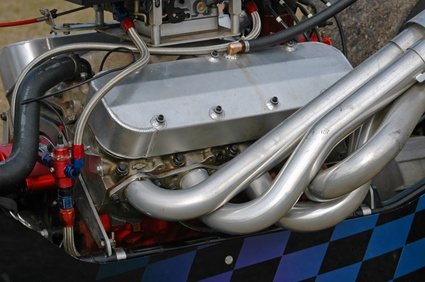
The basic premise of engine design is that the easier it is to move air in and out of the engine, the more efficiently the engine operates. Because of this, anything that improves the flow of air through the engine will affect every aspect of performance. Engine designs are a result of compromises, which leaves room for improvement in key areas of air flow. One effective way to improve airflow is to install aftermarket headers.
Aftermarket headers move exhaust gases from the engine more quickly than factory exhaust manifolds by allowing the gases to move more freely. This frees power from the engine that would normally be used to force exhaust gases out. In addition to increased air flow, they create vacuum in a process known as "scavenging." That process pulls exhaust gases from the combustion chamber, reducing the amount of exhaust left in the chamber to mix with fresh fuel and air, creating improved combustion and more power. This is realized at the crankshaft as an increase in net horsepower.
Headers improve torque by reducing back pressure and increasing the speed of airflow. In a stock exhaust manifold, exhaust from one cylinder can collide with the exhaust from another. This creates "back pressure" in the exhaust manifold that the engine must work to overcome, reducing how quickly an engine can increase rpms. Headers remove back pressure, increasing air velocity, allowing the engine to rev more quickly that assists in increasing the engines torque.
Since headers can reduce the power required to move air through the engine and improve the combustion of the fuel and air mixture, they naturally improve the efficiency of the engine. The engine wastes less energy pushing out the exhaust gases while burning the fuel and air mixture more completely. The end result is more power generated from the same amount of fuel, with less waste.
Like with torque, headers allow the engine to increase rpms more quickly. This means faster response to changes in the amount of air introduced into the engine. The engine can pull the air into the combustion chambers faster, which decreases the amount of time it takes for combustion to take place. The time period from when the accelerator is depressed, to the time the fuel and air mixture is burned is reduced, leading to faster generation of power.
Headers help to decrease emissions by allowing fuel to be burned more completely within the combustion chambers. This leaves less unburned by products to be expelled into the exhaust stream, reducing pollutants leaving the engine. Overall fuel efficiency is also improved so less fuel is burned to perform a given amount of work, reducing the overall amount of exhaust produced.